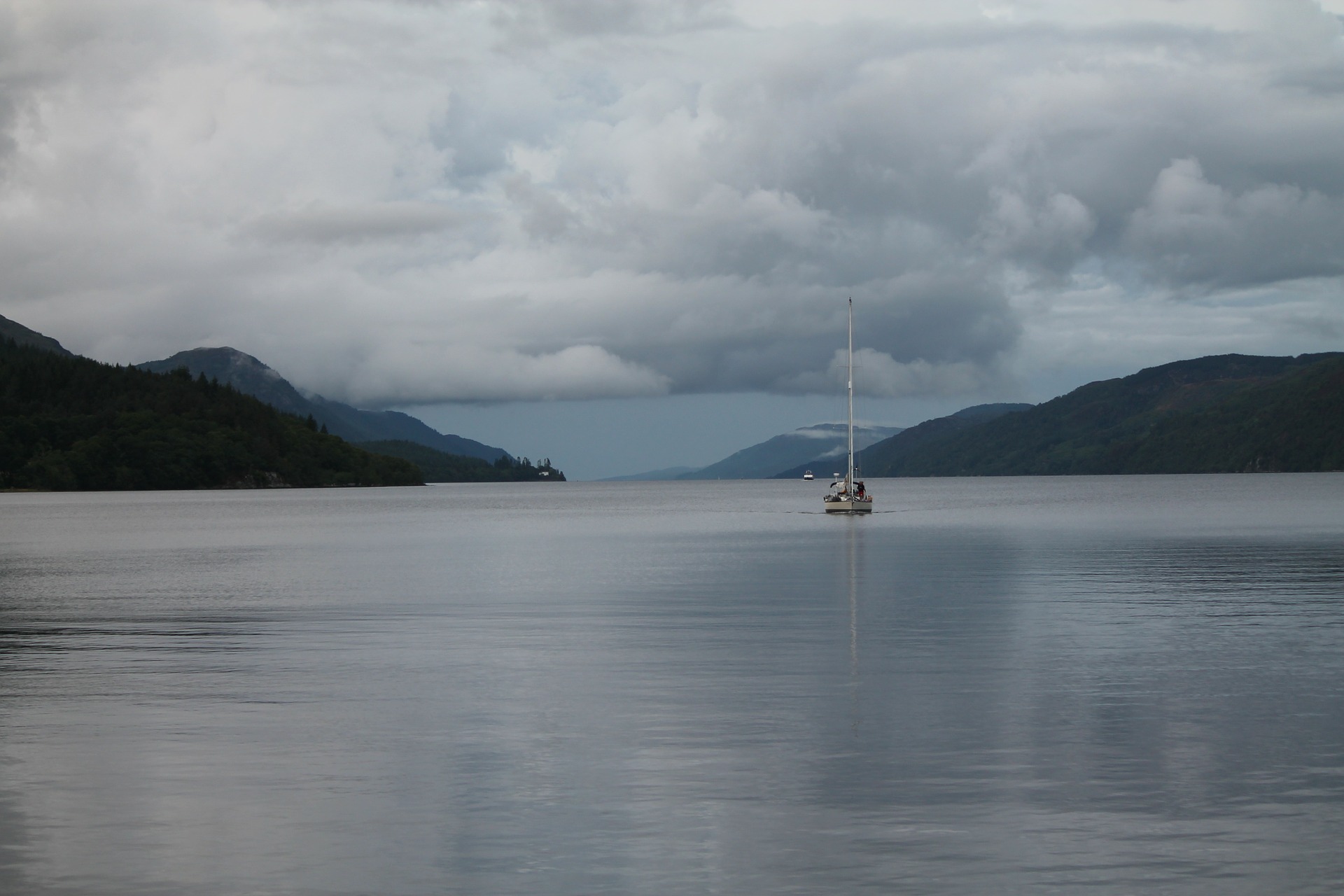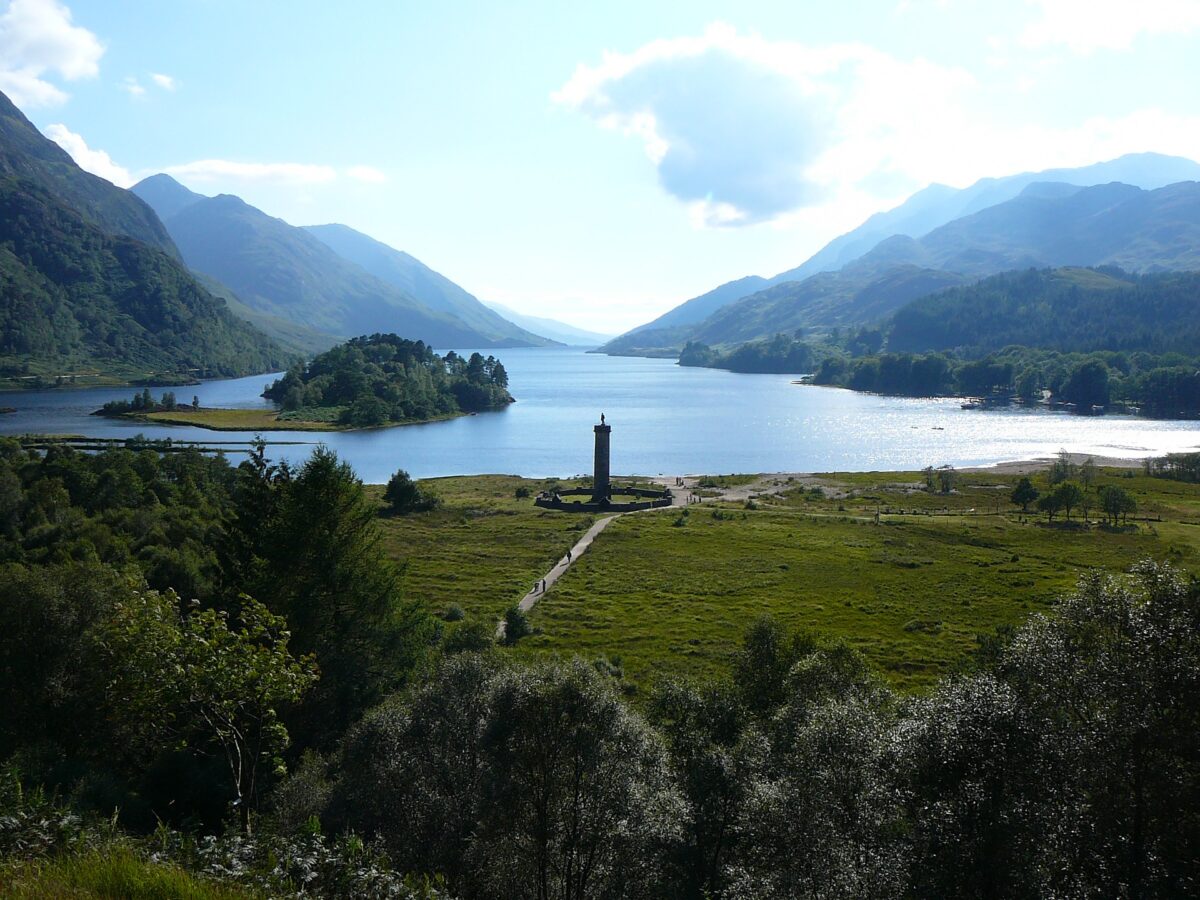Visit The Highlands of Scotland
Rugged. Remote. Remarkable. The Scottish Highlands are one of the most beautiful places in the world. From white-sand beaches that’ll have you thinking you’re in the Caribbean to awe-inspiring Munros, you’ll be spoiled for choice when you visit the Highlands.
Where are the Scottish Highlands?
Highlands Geography
The Scottish Highlands – often better known as simply the Highlands – is the largest geographical area in Scotland, covering nearly 10,000 square metres.
Geographically, the Highlands refer to the area north and west of the Highland Boundary Fault, which crosses mainland Scotland almost in a straight line from Helensburgh north-west of Glasgow, to Stonehaven near Aberdeen.
However, many areas that fall within this definition, such as Aberdeenshire and Moray, aren’t considered to be the Highlands, given their drastically different geography and cultural heritage. And although the islands of Orkney and Shetland are north of the Highland Boundary Fault, they’re also not considered part of the Scottish Highlands – although the Hebrides are.
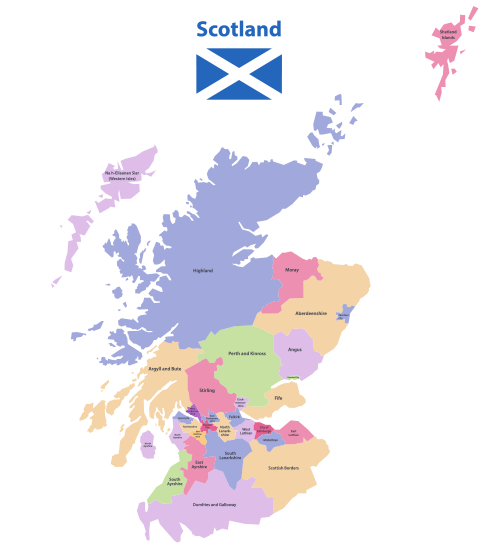

Highland Regions
There are also many regions which technically fall within this definition of the Highlands, such as the Loch Lomond and Trossachs and parts of Perthshire, that also aren’t usually considered to be the Highlands of Scotland. So, where do the Highlands start?
The Highland Council broadly covers the region that we’re referring to when we talk about the Highlands. The boundary runs from just south of Fort William in the west, up and around Skye, all the way up to the north coast, down through Inverness, and then skirting through the Cairngorms National Park in the east.
The highlands of Scotland are sparsely populated. Indeed, it’s one of the least populous areas in the whole of Europe, and the population density of the Scottish Highlands and Islands is the lowest in Scotland at just 8 people per square kilometre.
If you’re not sure, technically, if the area you’re in is the highlands of Scotland, one look around at the scenery should confirm it. The Scottish Highlands is defined by its dramatic landscape, from its lochs to mountains. There are over 31,000 lochs (freshwater lakes) in Scotland, and the majority of these are in the Highlands, including some of the country’s best-known and most picturesque lochs. Perhaps the most famous of them all is Loch Ness, which after Loch Lomond is the second-largest loch by surface area, but contains by far the most water, thanks to its incredible depth. At its deepest point, Loch Ness is 230 metres.
Visit this page to see more Scottish maps.
Highland Culture
Historically, the Highlands were distinct from the Lowlands of Scotland in several important ways. The primary language of the Highlands was established as Scottish Gaelic in the 10th century, and it dominated for centuries – but has been in decline since the 1700s. In 1755, it’s estimated that 22.9% of the Scottish population were Gaelic speakers, but this was just 1.1% by 2011.

The Clan System
Another key way in which the Scottish Highlands differed from the Lowlands was the clan system. Although there were clans across Scotland, they were particularly important in the Highlands, where clans were the key to community and social order.
The Battle of Culloden
A major turning point for the clan way of life, however, was the Battle of Culloden in 1746. This battle – the last major battle fought on the British mainland – was the downfall of the Jacobite uprising. The Jacobites were the supporters of King James VII of Scotland and II of England, and there was great support for the movement in the Highlands. However, the Battle of Culloden, where an estimated 1,500 Jacobites were killed, changed the face of the Highlands forever.
The Highland Clearances
After the battle, clan chiefs were deprived of their legal power and status, any Jacobite estates were seized, and clan tartan was outlawed. This was soon followed by the Highland Clearances, one of the most devastating periods in Scottish history – and one of the major reasons why the Scottish diaspora can be found far and wide today, from America to Argentina. It’s also the main reason why the population of the Highlands is, to this day, so low.
There were two main phases of the Clearances, the first of which took place roughly between 1760 and 1815. This was driven by land management and agricultural movement, with many landlords replacing the run rig farming system with larger-scale pastoral farms, which commanded much higher rents. Displaced farmers were either downgraded to crofters, or expected to find work in other industries like fishing or kelp farming. The farms were usually then used for sheep farming, which turned over a much higher profit.
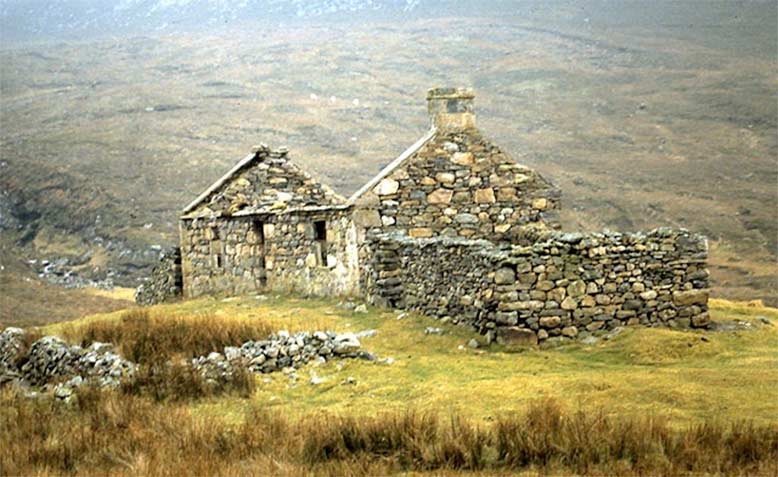
The second phase of the Clearances took place between 1815 and the 1850s. In this phase, landlords forcibly moved tenants from their homes, in some cases paying for their passage to America, Canada and, later, Australia. It’s estimated that 10,000 Highlanders emigrated to Canada – voluntarily or otherwise – and a further 5000 to Australia during this time.
It’s thought that in 1755, 51% of the Scottish population lived in the Highlands and Islands, but by 1981, this figure sat at just 21%. This is an important part of Scotland’s history, and you’ll find many reminders of it as you travel through the Highlands, from the ruins of former croft homes, to memorials like the monument to the Clearances in Helmsdale.
Places to Visit in the Scottish Highlands
From a spot of sightseeing to the three W’s (walking, wildlife and whisky) there’s something for everyone, though lovers of nature especially will be particularly impressed with this ruggedly beautiful wilderness. Let’s take a look at some of the best places in the Highlands to add to your itinerary, whether you’re visiting for a weekend, a week, or even longer.
Glen Coe
One of the most iconic destinations in the Highlands, Glen Coe is a must-visit. You’ll be astounded by its beauty as you drive through the area, and there’s plenty to explore off the beaten path for those who want to get better acquainted with this beautiful part of Scotland.
If you’re a James Bond fan, you’ll recognise this area as the setting for Bond’s childhood home from Skyfall, and it’s also featured in plenty of other films, including Harry Potter and the Prisoner of Azkaban.
The road through Glen Coe takes you along the heart of an ancient volcano, with stunning mountains on either side. Have your camera at the ready, as there are jaw-dropping views at every twist and turn of the road. There are plenty of places to stop along the way, to soak in the views or head on a walk. For a gentle walk, head from An Torr woods to Signal Rock, or take the trail around pretty Glencoe Lochan, located just north of the picturesque village of Glencoe. For the more adventurous, there are plenty of Munros to bag in the area, including the almighty Aonach Eagach ridge – not for the faint-hearted!Of course, if you’re in the area, you can also visit the Highland Titles Nature Reserve. If you’re a Lord or a Lady, drop by to visit your plot, or simply spend some time exploring our beautiful grounds.
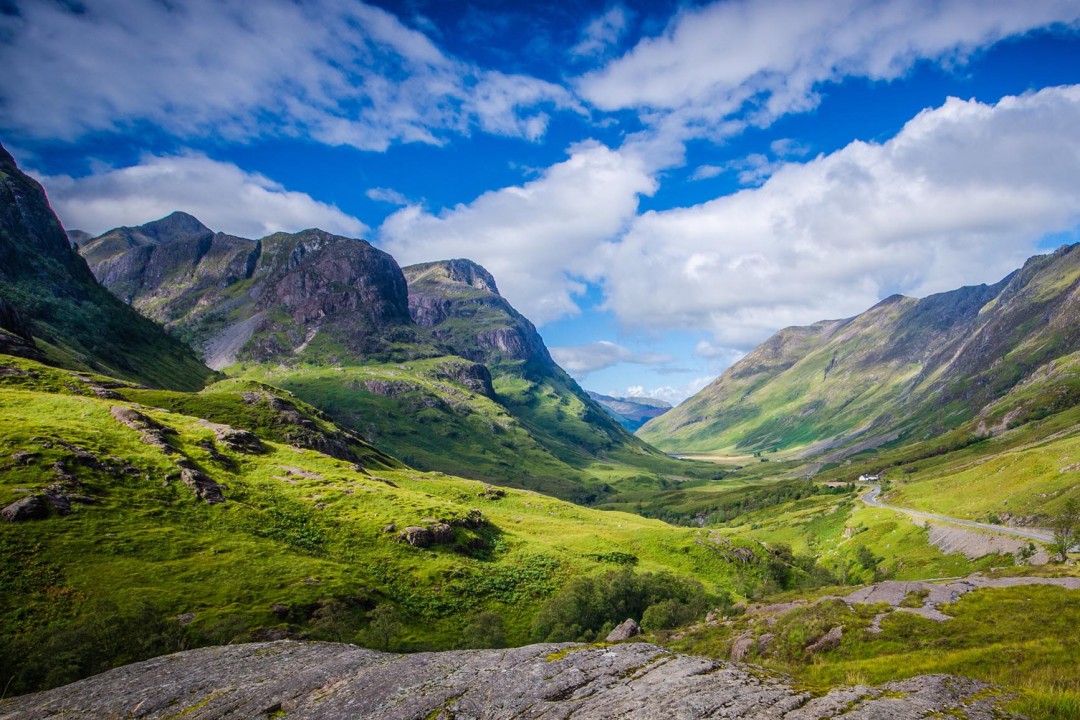
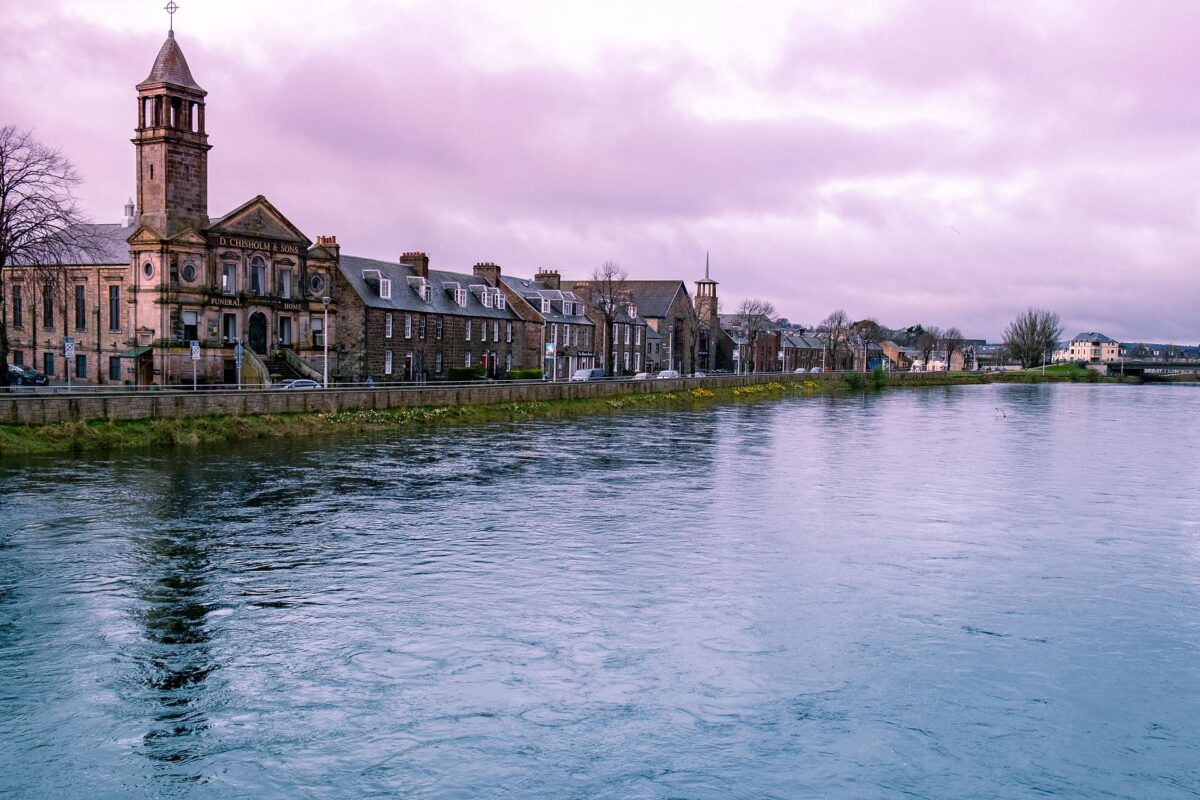
Loch Ness
Another must-do when you visit the Highlands is to go Nessie hunting! The second largest loch in Scotland, Loch Ness stretches from Fort Augustus in the south to Dochgarroch in the north. Both are great places to get a good view of the loch – and you can even take a cruise on the water from Fort Augustus! Inverness and Drumnadrochit also offer cruise options, and Drumnadrochit is the home of the Loch Ness Centre and Exhibition, where you’ll find out more about the loch and the surrounding area.
When you’re in the area, be sure to visit Urquhart Castle, also in Drumnadrochit. This ruined castle has a fantastic vantage point over Loch Ness, offers unrivalled views, and information all about this historic place. The castle played an important role in the Scottish Wars of Independence in the 14th century, and was partially destroyed in 1692 to prevent it from becoming an important base for the Jacobite forces.
And of course, Loch Ness isn’t just famous for its beautiful scenery and historical significance – it’s gained worldwide recognition as the home of the Loch Ness Monster. People have been hunting for Nessie, as it’s affectionately known, since 1933, when multiple sightings were reported in the national and international press – although there are sightings of the monster dating back to the time of Saint Columba! Will you spot Nessie on your trip? Don’t forget your binoculars!

North Coast 500
The north west of Scotland has some of the country’s most spectacular scenery, and really is one of the best places in the Highlands. Luckily, you can see all of the highlights in one trip, along the North Coast 500.
This 516-mile route was launched in 2015, and is often cited as one of the best drives in the world. The route starts and finishes at Inverness Castle, and is usually travelled in a clockwise direction, taking in the regions of Inverness-shire, Ross and Cromarty, Sutherland and Caithness along the way. Most people take five to seven days to do the full trip but really, the longer the better as you can really take the time to explore the scenery, towns and villages along the route, and get off the beaten path to discover nearby places that are less visited by those doing the NC500.
There are an incredible number of highlights along the route – some of which we’ve listed in our guide to the NC500 – and we’re sure you’ll discover plenty of your own favourites along the way, too.


Along the way, you’ll pass over the Bealach na Bà on the way to Applecross, one of the steepest roads in the UK, with winding hairpin bends. It’s not suitable for campervans or caravans, but if you’re travelling by car, it’s one of the highlights of the trip, with spectacular views. Pull in at the top to enjoy the views before continuing down the hill to the pretty village of Applecross.
The north coast also has some of the most beautiful beaches you’ll find anywhere in the country. From the gorgeous white sands of Achmelvich to the Sandwood, the most remote beach in the UK, be sure to plan in some time to enjoy these incredible places.
The north coast of Scotland is a magical place, with plenty to see and do, whether you want to sample the best of the local cuisine, explore some of the Highlands’ most wild and remote mountains, or simply soak it all up from the comfort of your car.
Ben Nevis
Looking for a challenge? Why not climb Ben Nevis, the highest mountain in the UK? Sitting at an incredible 1345 metres above sea level, Ben Nevis is an imposing sight in the Fort William area, and a key destination for mountain lovers. Over 150,000 people attempt the climb every single year.
If you want to join them, navigation skills are a must. Although there are clear paths up Ben Nevis, it’s a high and exposed mountain, with dangerous drops off the north face of the mountain, just a few metres from the summit cairn. If you’re not a confident walker, or simply want some company, you can hire a guide to take you safely up the mountain.
Alternatively, you can enjoy the views aboard a ride on the Nevis Range mountain gondola. Built on the nearby Aonach Mòr, the gondola reaches heights of 850m with views over the Great Glen, Ben Nevis, and even as far as the Inner Hebrides on a good day. From the top of the gondola, there are two easy walks to enjoy before hopping back on for the return trip down the mountainside.
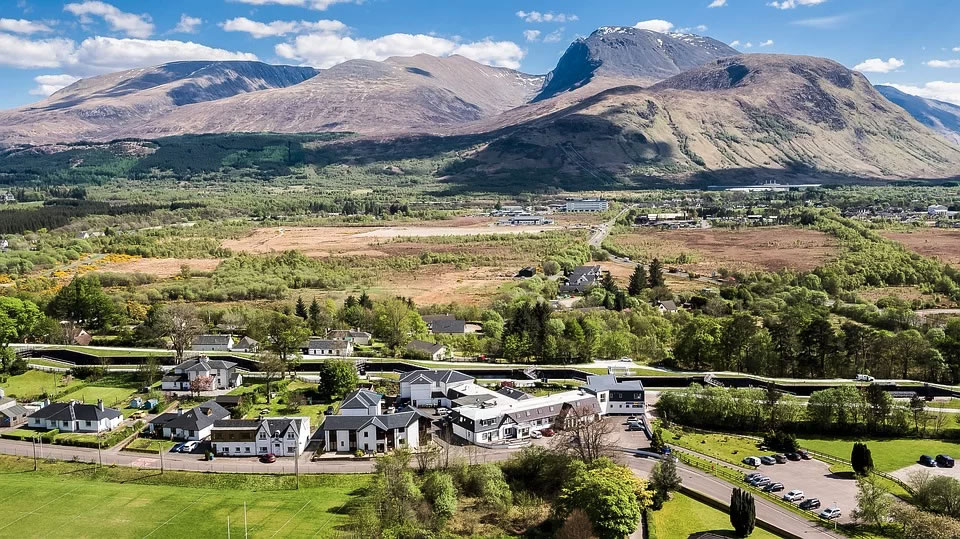

Glenfinnan Viaduct
Another must for Harry Potter fans, the Glenfinnan Viaduct is one of the most recognisable sights from the movies. But it’s also full of historical significance, as well as being a feat of civil engineering, so even if you’re not a Harry Potter fan, you should make the time to visit this beautiful location.
One of the best ways to experience the viaduct is a train trip on the West Highland Line. Starting from Glasgow, this train journey winds its way through some of the most scenic locations along the west coast, before crossing the viaduct and travelling onwards to pretty Mallaig. Alternatively, you can drive to the viaduct where, if you time it right, you’ll be able to see a train passing over from the viewpoint.
Here you can also visit the Glenfinnan Monument, a memorial to the Jacobites who died fighting for their cause.
Things to do in the Highlands
Walking, whisky, wildlife – or something else entirely? Whatever you’re into, there is no shortage of things to do in the Scottish Highlands. Here are some of our top tips for what to see in the Highlands.
Walks in the Highlands
Whether you’re an avid mountaineer or prefer low-level walks, there’s something for everyone when it comes to walking in the Highlands.
Munros
If you’re up for a challenge, consider bagging some Munros during your trip. Munros are Scottish mountains over 3000 feet (914.4 metres) and are named after Sir Hugh Munro, who first classified this mountain group.
Munro bagging is a popular pastime for hillwalkers in Scotland. If you manage to summit all 282 Munros, you can consider yourself a ‘Munroist’ or a ‘compleater’. You might not manage all of them on your trip to the Highlands, but it’s a great place to bag a summit or two!
One of the most popular, of course, is Ben Nevis, but there are plenty of other options, too. Ben Hope is the most northern Munro, standing in the northern county of Sutherland – a great option for a day trip if you’re travelling the North Coast 500! Ben Wyvis, near Dingwall, is another fairly straightforward hike.
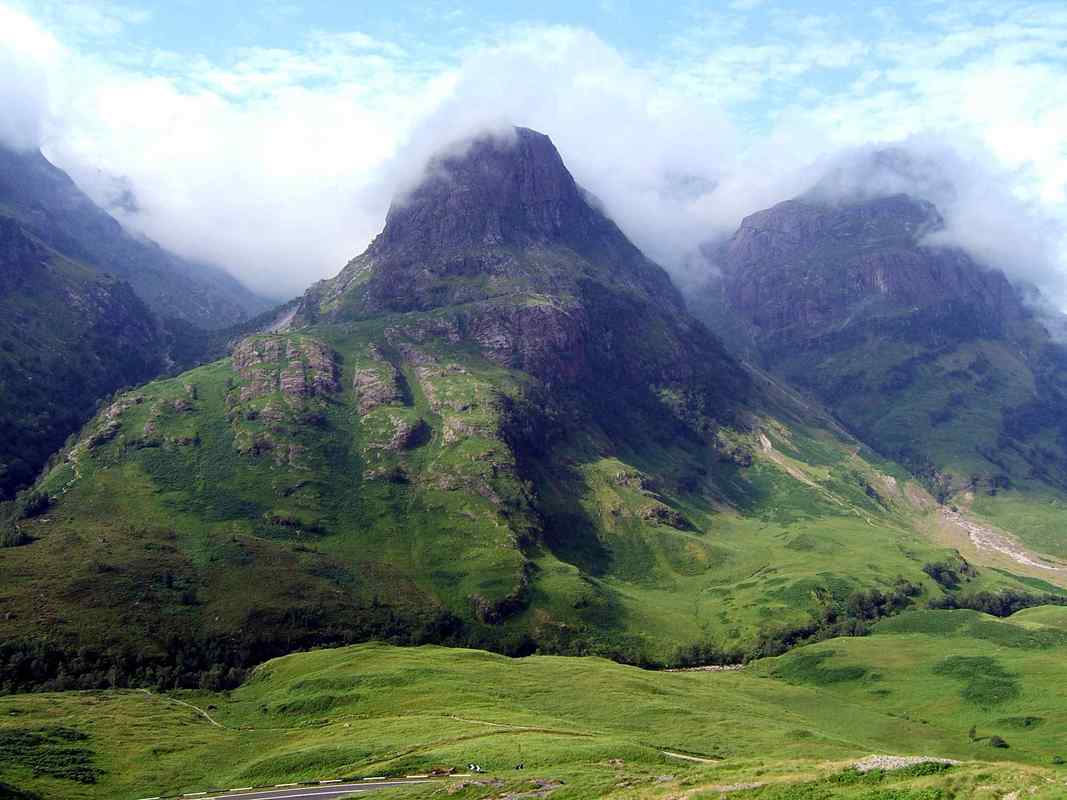
For something a bit trickier, you can’t beat the Cuilin on Skye. These rocky mountains dominate the skyline on the lower part of the island, and are a real challenge for experienced hillwalkers. The ridge also includes one of the most challenging Munro summits – the Inaccessible Pinnacle. This is best tackled with the help of a guide – and there are plenty on Skye who’ll help you safely ascend it for a real feeling of achievement.
Smaller Climbs
Although many strive to ‘complete’ the Munros, there are lots of other beautiful hills and mountains that you shouldn’t overlook just because they fall short of 3000 feet. One such mountain is Stac Pollaidh, a unique mountain that’s hard to miss if you’re passing through Assynt. The walk offers outstanding views across Assynt, and is suitable for all levels of hillwalker, whilst the true summit offers up a bit more of a challenge with a tricky scramble.
You’ll also find lots of options for lower-level walks in the Highlands. Take a stroll along part of the Great Glen Way, which links Fort William and Inverness, or take a trip up to Fyrish Monument, an unusual structure just north of Inverness.
Whichever part of the Highlands you’re visiting, you’ll find many ideas for walks on Walk Highlands, one of the best resources for finding and planning hikes in the country. Remember to always be prepared with a good pair of walking boots or shoes, a map and compass, and plenty of spare layers – the weather in Scotland can be unpredictable, especially in the mountains!
Best Scottish Highlands Castles and Museums
History buffs are spoiled for choice in the Highlands. This area is rich in history, with plenty of fantastic castles and museums to explore.
Highland Folk Museum
One of the best museums is the Highland Folk Museum in Newtonmore. Here, you can step back in time and experience what life was like as a Highlander, from the 1700s all the way up to the 1950s. This open-air museum has over 35 historical buildings you can explore, while learning about how Highland people lived, worked, ate and dressed.
You could easily spend a full morning or afternoon here, and there’s a cafe, play area and shop to help you make the most of your time there.
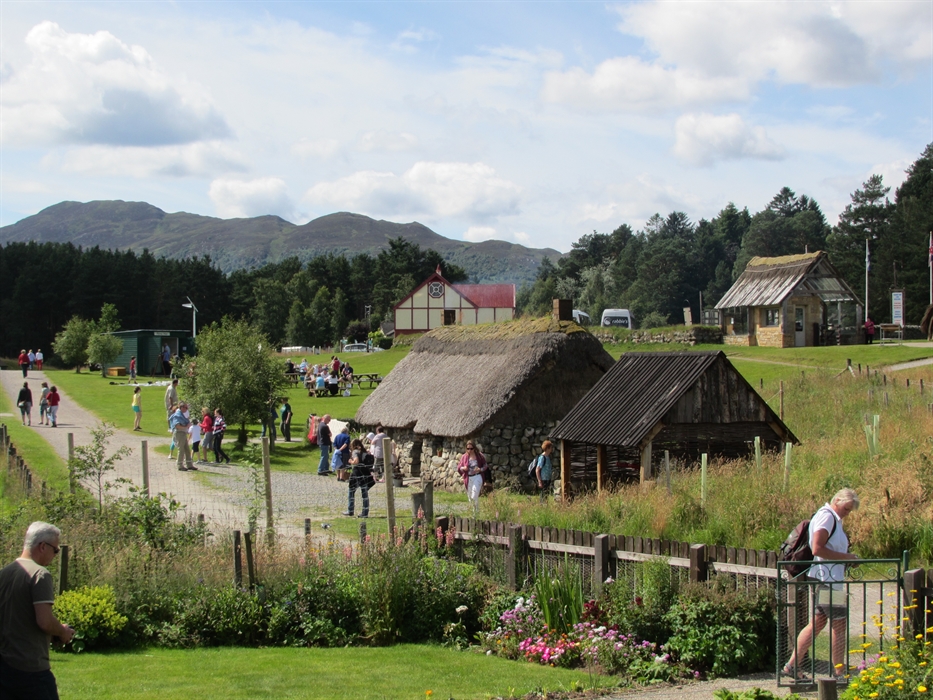
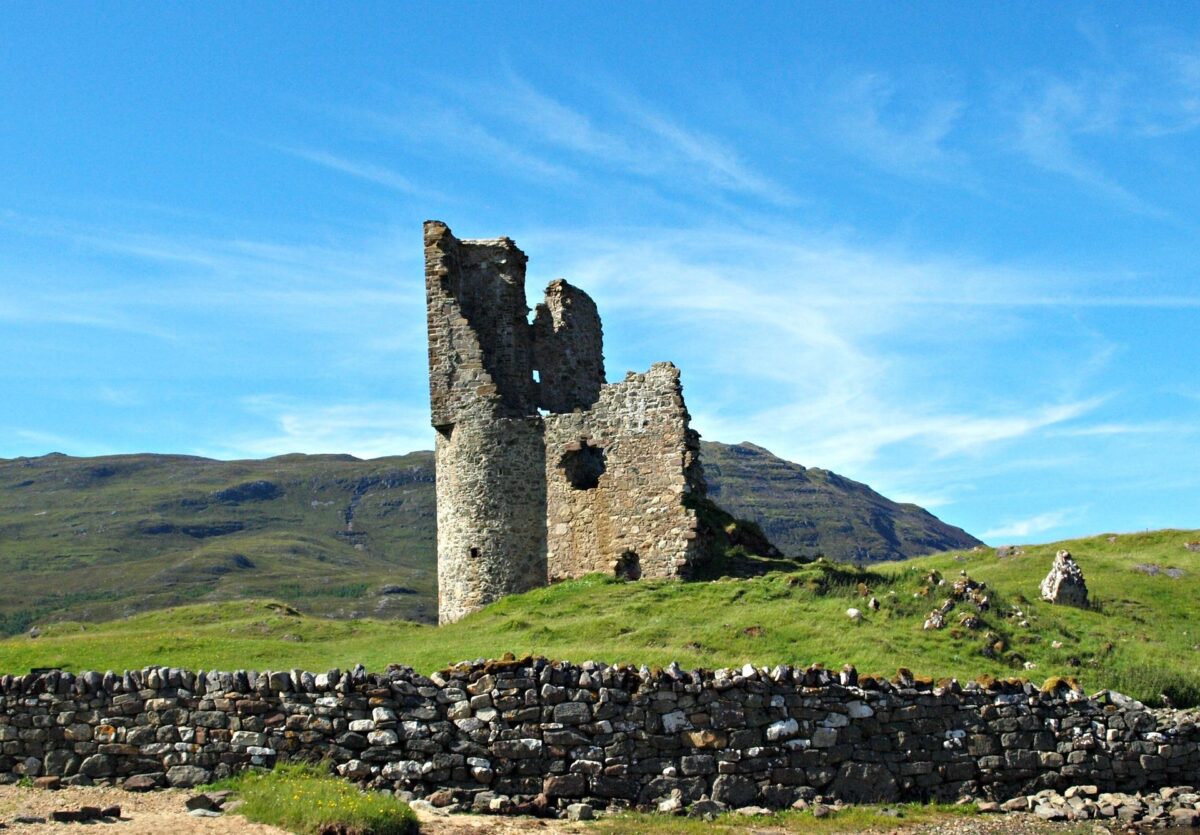
Castles
There are also a great number of castles to explore in the Highlands. Eilean Donan is one of the most recognisable castles in Scotland – and when you get there, you’ll instantly see why it’s so popular. Set on its own little island where three sea lochs meet, the setting is simply magnificent. The castle overlooks the island of Skye, and well worth a stop as you make your way towards this incredible island, which is often at the top of visitors’ itineraries.
For a completely different type of castle, consider a visit to Dunrobin Castle in Sutherland. This castle is more reminiscent of a Disney fairytale castle than the typically Scottish stone building of Eilean Donan. Dunrobin is the home of the Sutherland family, who’ve lived there for more than 700 years, and it has exquisite gardens to explore, as well.
Wildlife in the Highlands
From eagles soaring overhead to Highland cows grazing in the fields, one of the highlights of the Highlands is definitely its wildlife. You can enjoy wildlife spotting almost anywhere in the Highlands, but there are certain areas you should head to if you’re hoping to catch a glimpse of specific types of animals.
How to See Scottish Wildlife
All of the Highland Titles Nature Reserves are fantastic for wildlife spotting. From red squirrels to deer, you never know what you might spot in one of these tranquil spots.
The Highlands’ coastal regions are a great place to spot dolphins. Head to the Black Isle, just north of Inverness, for the best chance of seeing some of these magnificent creatures. You might also spot orca or whales from the Black Isle, as well as all around the north coast of Scotland.
For a fully immersive wildlife experience, why not take a wildlife safari? You’ll find providers all over the Highlands, led by guides who know the best places to go to spot wildlife, and the best times to see them. They’ll provide plenty of photo opportunities as well as giving you local insights and tips.
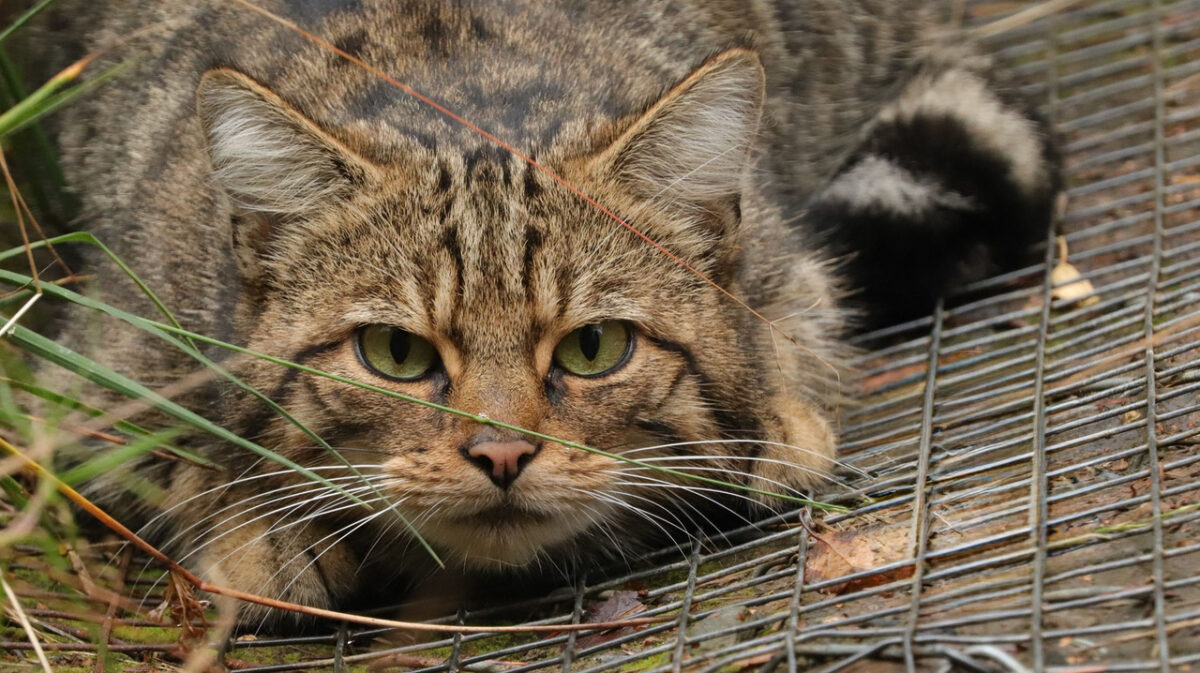

Where to See Highland Cows
And what about the Highlands’ most famous furry faces? If all you want to know is “where to see Highland cows”, don’t worry – we’ve got you covered. These adorable creatures are distinctive, thanks to their long hair (usually ginger but can also be black), and long horns.
Highland cows can be found all over the Highlands, often in fields beside roads. If you’re heading to Inverness, take a trip to Cameron’s Tea Room, where they roam around the fields. You’ll usually also be able to spot Highland Cows on Culloden Battlefield – a visitor attraction that’s worth a visit in its own right!
The beautiful coastal village of Plockton should be on your list to visit for many reasons – especially if you’re hoping to meet some friendly Highland cows, as here they roam freely around the village!
If you’re heading to the Highland Folk Museum, you’re also sure to see some cows. Here they’ll happily greet visitors and pose for photographs, and you can also head to the nearby Rothiemurchus Estate in the western Cairngorms to see cows against a picture-perfect backdrop.
Outdoor Activities in the Highlands
The Highlands are a playground for all sorts of outdoor activities, from cycling to kayaking.
Cycling
Fancy a spot of Highlands cycling? There are a whole host of routes to choose from, whether you’re looking for a peaceful cycle round a loch or a challenging mountain route.
If you’re heading to the Outer Hebrides, you could tackle the Hebridean Way, for either the full 185 miles, or just for part of the route. From Vatersay to Lewis, this route follows the Outer Hebridean island chain, where you’ll see some of the best beaches in Scotland, as well as having the chance to experience a slice of island life.
Loch Ness is another great option for cycling enthusiasts. The Loch Ness 360° Trail loops round the entire loch for 80 miles, linking together parts of the Great Glen Way and the South Loch Ness Trail for an entirely off-road adventure. Tackle the whole thing or break it up into smaller sections to explore the loch at your own pace.


Water Sports
Water sports are also a great choice if you’re looking for an adventure when you’re in the Highlands. There are plenty of places to get on the water and see the scenery from a different perspective. Sea kayaking from Applecross, Mallaig or Ullapool is a wonderful experience, with many companies offering beginners lessons as well as multi-day trips for the more experienced kayaker.
And, of course, given the great number of lochs in the Highlands, there’s always the opportunity for a dip. Wild swimming has become wildly popular in recent years – and with good reason! There’s nothing quite as exhilarating as a dip in cold water, surrounded by beautiful scenery. Try the Fairy Pools in Skye for a swim in one of the most scenic locations you’ll ever come across, or dip your toes into the water at one of the area’s many picturesque beaches.
Shooting
The Highland Shooting Centre is another great choice if you’re looking for unusual things to do in the Highlands. Based in Lairg, right in the middle of Sutherland, they offer a great range of activities for all ages including air rifle, airsoft, archery and clay shooting.
Food & Drink in the Highlands
It wouldn’t be a trip to the Highlands without sampling some of the region’s finest exports.
Best Whisky Tours
There are plenty of places to enjoy a dram or two of Highlands whisky, and we’re sure you’ll soon discover your personal favourite after a tour of a couple of distilleries.
The Highland whisky region covers a wide area, covering everywhere within the Highland region of Scotland, the islands (excluding Islay) and Aberdeenshire – apart from Speyside, which is its own specific type of whisky.

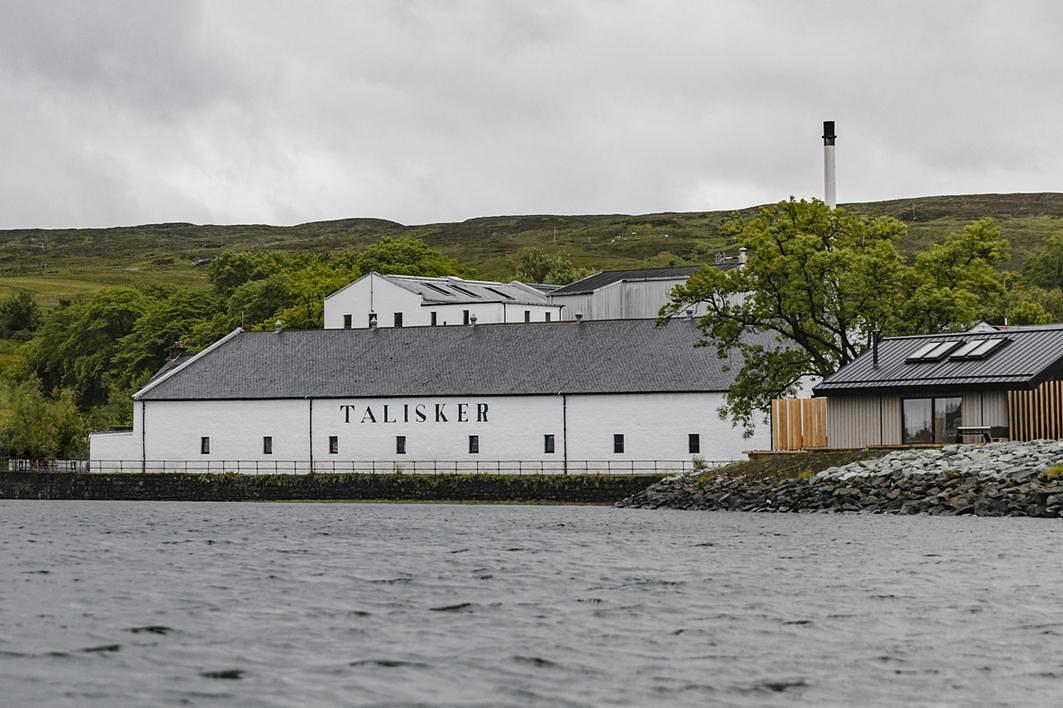
You’ll find distilleries dotted all around the region, and most of them offer tours. If you’re visiting Skye, take a tour of the Talisker Distillery. Not only is the whisky fantastic, but the views are also unrivalled, with a dramatic backdrop of the Cuilin and just moments from the beach.
Glenmorangie near Tain, north of Inverness, is another good option particularly as a last stop on the NC500 as you head back towards Inverness. It has the tallest stills in Scotland, and an informative tour where you’ll learn all about the brand’s history.
Slightly less well known is Ardnamurchan Distillery. Just in its fifth year of welcoming visitors, this distillery is set on the beautiful Ardnamurchan peninsula. Head a little further west from the distillery and you’ll find the most westerly lighthouse on the UK mainland, as well as some stunning beaches. Well worth a detour on your way to the Glenfinnan Viaduct or Skye!
Highlands Foodie Highlights
From street food to fine dining, the Highlands has it all for food lovers.
One of the key highlights is fresh seafood. Locally caught and delicious, fresh fish and seafood can be found all around the coast. Try The Seafood Shack in Ullapool for the freshest possible food. Fishermen drop off their catch in the morning, and the Shack creates the menu based on what’s available that day – so the menu changes daily. You might have hearty cullen skink, a fish soup, or you could be treated to hand-dived scallops. Whatever’s on the menu, one thing’s for sure – it’ll be delicious.
Also not to be missed is the pies in Lochinver. Lochinver Larder offers a mouth-watering selection of pies, from classic steak and ale to sweet pies like apple and blackcurrant. They even do postal orders, so you can feed your pie cravings even when you’re back home!
For something more upmarket, head to The Three Chimneys on Skye. This remote restaurant has held three AA Rosettes since 2000, and was awarded a Michelin star in 2014. It also has five-star accommodation, so dinner and an evening here is an absolute must for foodies travelling around the Highlands.
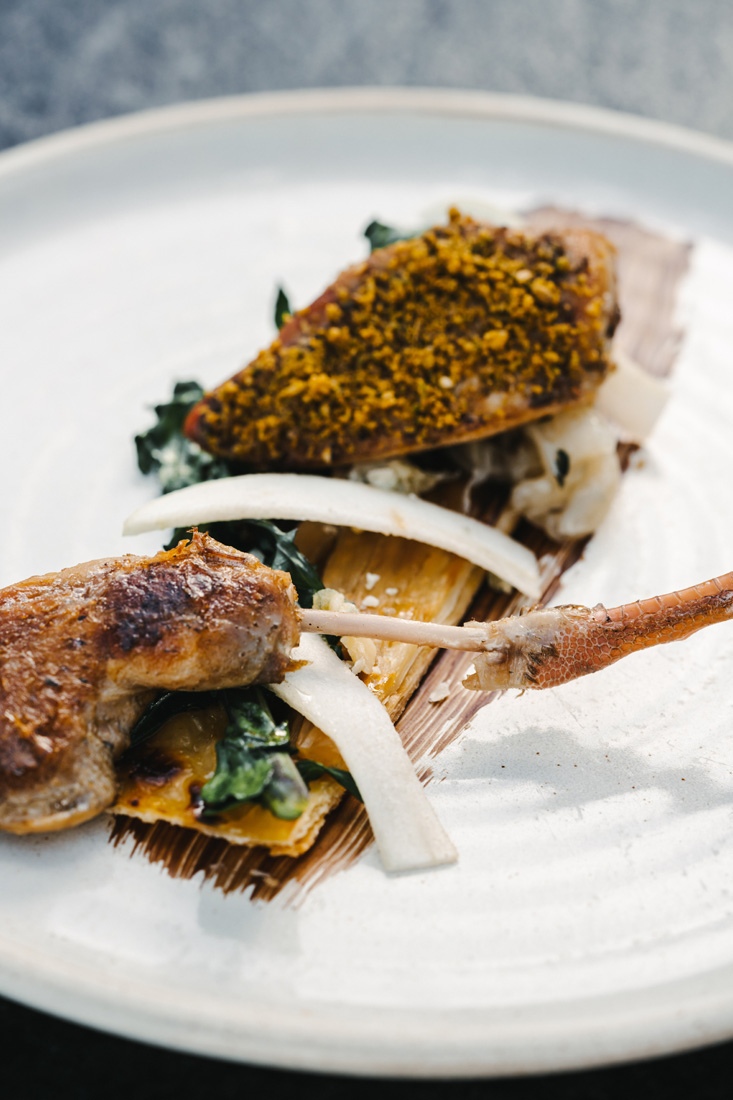
Where to Stay in the Highlands
The Highlands is such a vast region that you can’t possibly see all of it on one short trip. The best way to decide where to stay is to do some research to decide what your must-sees are. Do you really want to see Skye and the Outer Hebrides? Do you want to explore the beaches along the North Coast 500 route? Or would you love to spend some time experiencing everything the Loch Ness area has to offer?
Once you’ve narrowed it down, you can start to look at accommodation options. You might even want to have a couple of bases from which you can explore different parts of the Highlands, for example staying for a few nights in Inverness, before making your way north for another few nights.
The Monastery
There are plenty of accommodation options across the region to suit all budgets, from five-star hotels to hostels, so you’re sure to find an option to suit. There are even some unique places to stay, if you fancy a night in a castle – or even in a converted monastery! Located in Fort Augustus, The Highland Club is the perfect base for exploring Loch Ness and beyond – and has everything you could need to enjoy your stay in the Highlands!


Buy your own piece of the Highlands
When you visit the Highlands, you’re sure to fall in love. You can buy your own little piece of the Highlands to keep it forever in your heart – and give you a reason to return again to visit your land! When you buy a plot of land, you’ll become a Lord or Lady – and what’s more, you’ll be helping to create nature reservations for many more visitors to enjoy the beauty of the Highlands for years to come.
